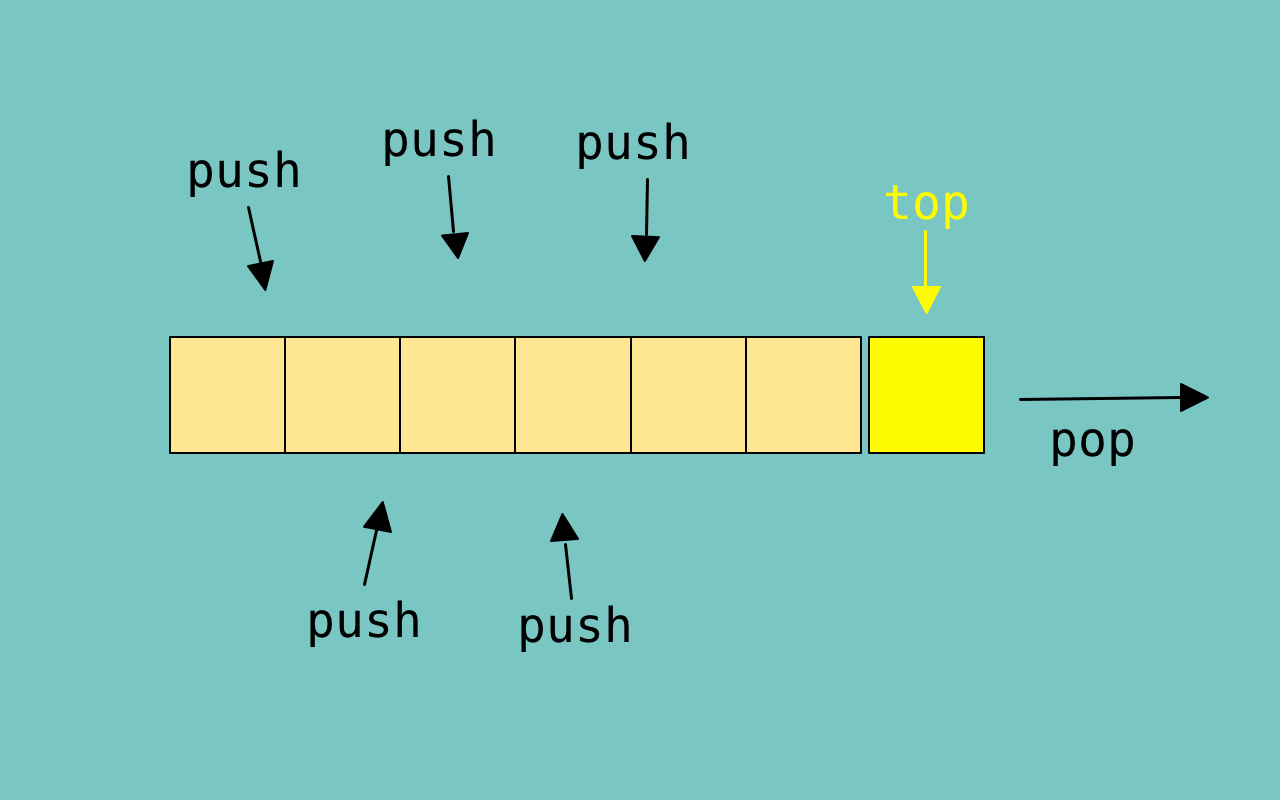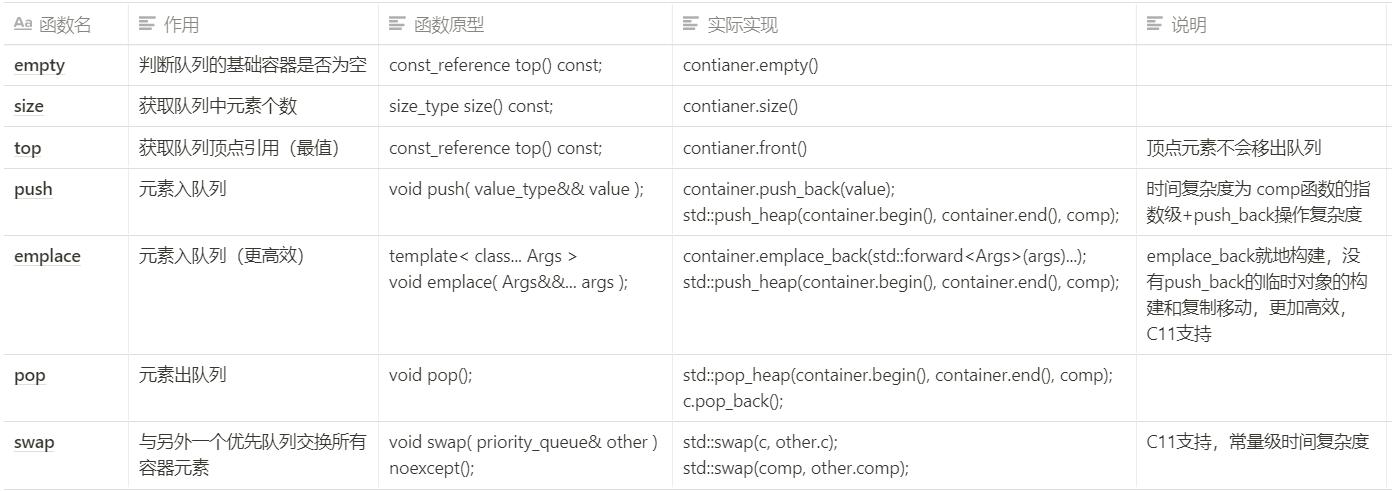C++ std::priority_queue优先队列详解
STL priority_queue优先队列
优先队列是一种容器适配器,队列元素要求实现了严格弱排序(Strict Weak Ordering),保证队列顶点(top)元素始终为最大值(最小值)。
优先队列本质上是一种堆,默认最大堆,即每一个父节点的值都比其子节点要大,因此根节点中的元素总是树中的最大值,因此常用于最值的读取。在时间复杂度上,优先队列实现单个元素的增删都是O(log n),而读取队列顶点则为O(1)
接口原型 🔎
如下接口定义可以看出,优先队列的定义包含三个元素:
- 元素类型T;
- 存储元素的基础容器类型,要求为拥有连续内存分布的SequenceContainer, STL中满足的就是std::vector and std::deque两种了;
- 元素比较函数Compare, Compare函数主要用于元素比较,实现严格的弱排序,由于排序,优先队列已经不满足“先进先出”的特性了。
1 | |
主要成员函数
所有STL标准库实现的数据结构,都有对应的CRUD(增删改查)接口,形式也基本类似.


Comp函数
comp函数默认为使用仿函数std::less<int>,表示最大堆 ,这里less是降序,但由于优先队列将top指向了队列尾;同理,std::greater<T>,表示最小堆.
1 | |
comp函数要求严格弱排序,那么什么是严格弱排序
维基百科给出了如下定义,简言之就是内置类型会通过!(a < b) && !( b < a ) 来判断ab是否相等,如果判断中携带了=如>=、<=,将导致相等判断逻辑出现错误。
A Strict Weak Ordering is a Binary Predicate that compares two objects, returning true if the first precedes the second. This predicate must satisfy the standard mathematical definition of a strict weak ordering. The precise requirements are stated below, but what they roughly mean is that a Strict Weak Ordering has to behave the way that “less than” behaves: if a is less than b then b is not less than a, if a is less than b and b is less than c then a is less than c, and so on.
另外当元素类型T为自定义类型时,那就需要自定义的comp函数,一般有实现后缀运算()函数 和 重载关系运算符 <、 > 两种方式
1 | |
例子
优先队列作为数据结构中堆的一种具体实现,在leetcode算法题中出现频率较高。比如这题leetcode 1792. Maximum Average Pass Ratio
在如下解答中,可以发现priority_queue的几个关键接口的使用。
另外算法层面可以看到,通过对优先队列进行增删读元素,使得每次都对最值进行操作,也就保证了每次操作都为最优解。实际上这就是贪心算法,通过求解每个子问题的最优解,来得到整个问题的最终最优解。也正因如此,优先队列就常在一些有约束条件下的分配问题。
1 | |
⚠ Note: 转载请注明出处
本博客所有文章除特别声明外,均采用 CC BY-SA 4.0 协议 ,转载请注明出处!